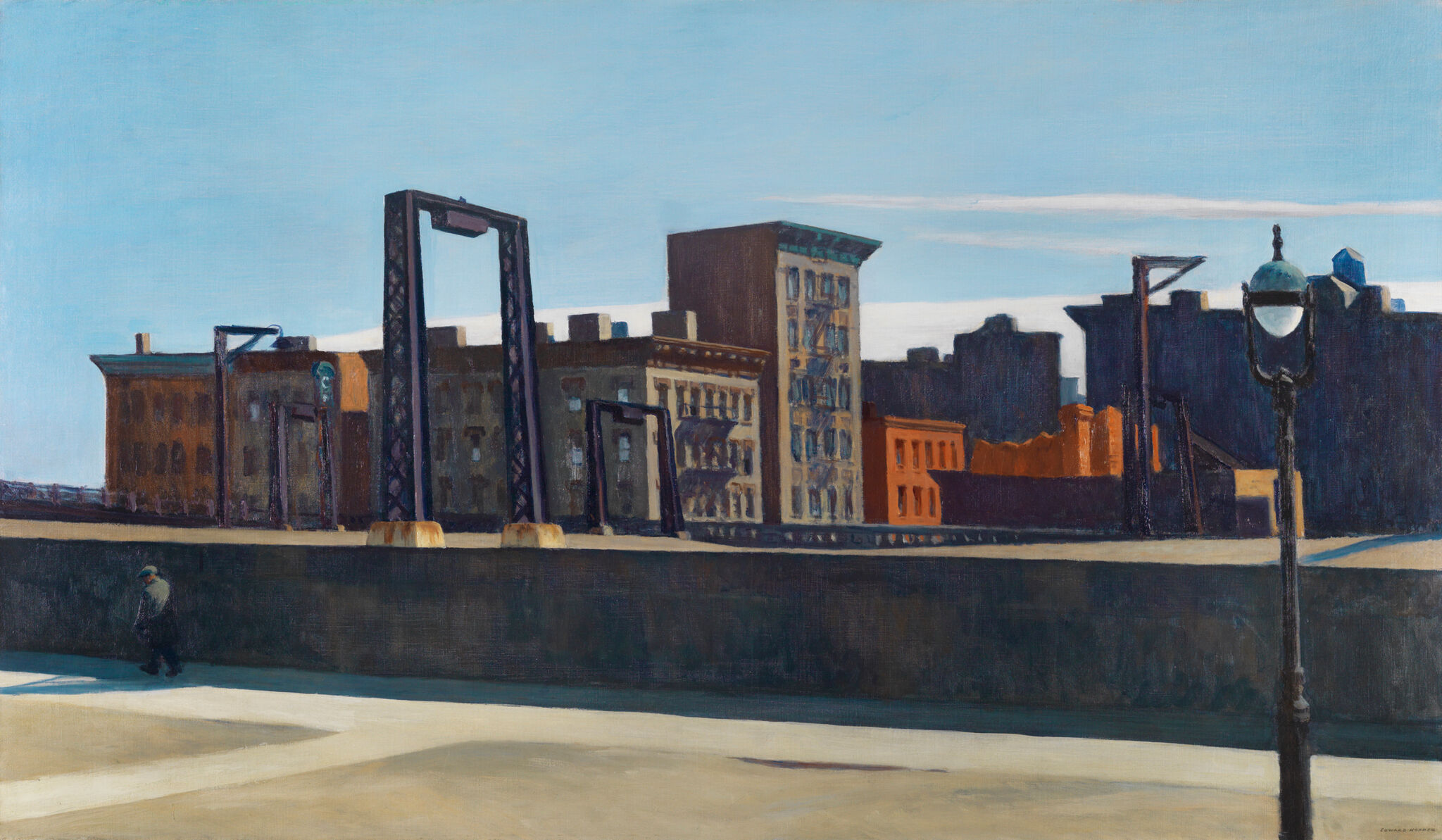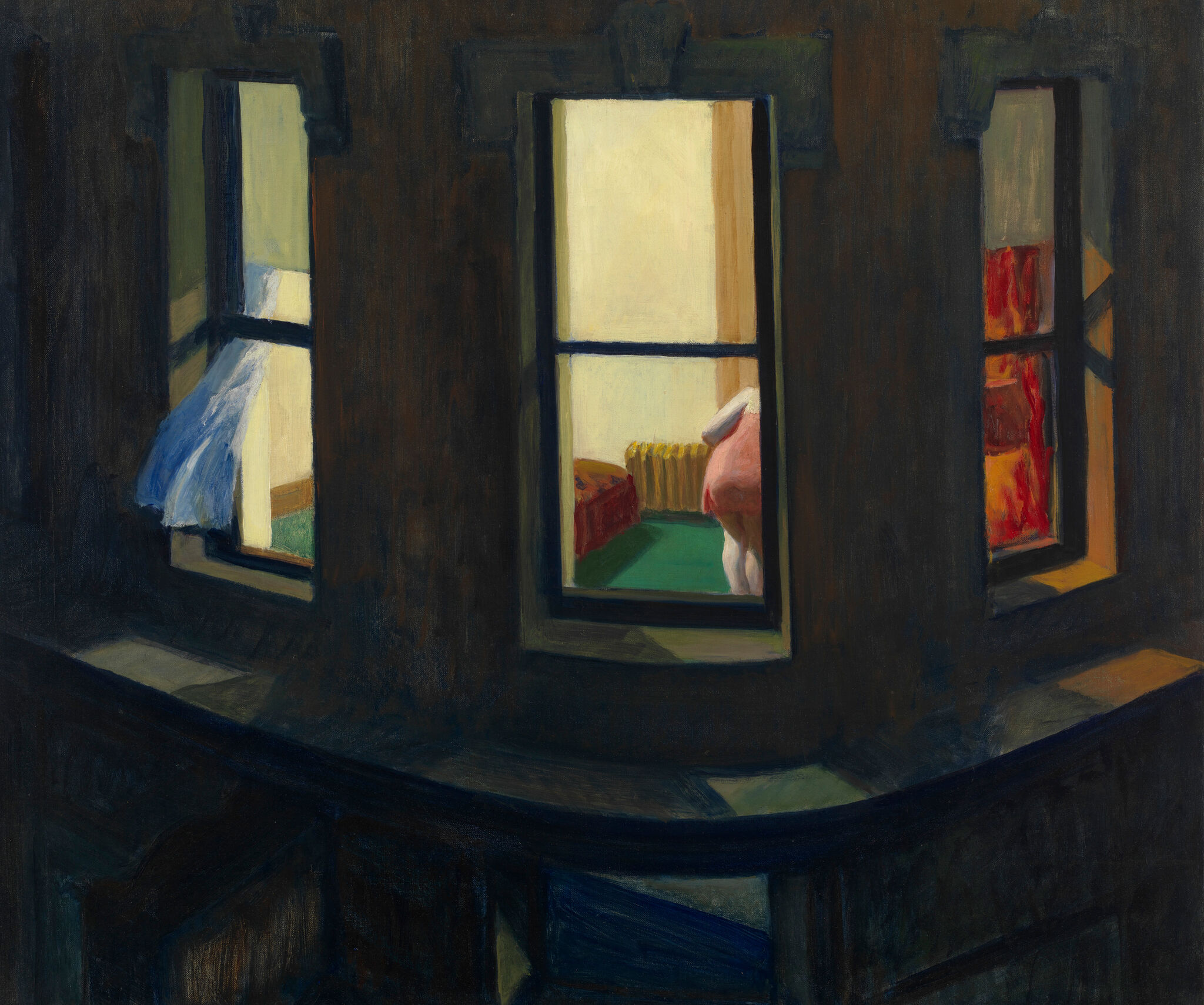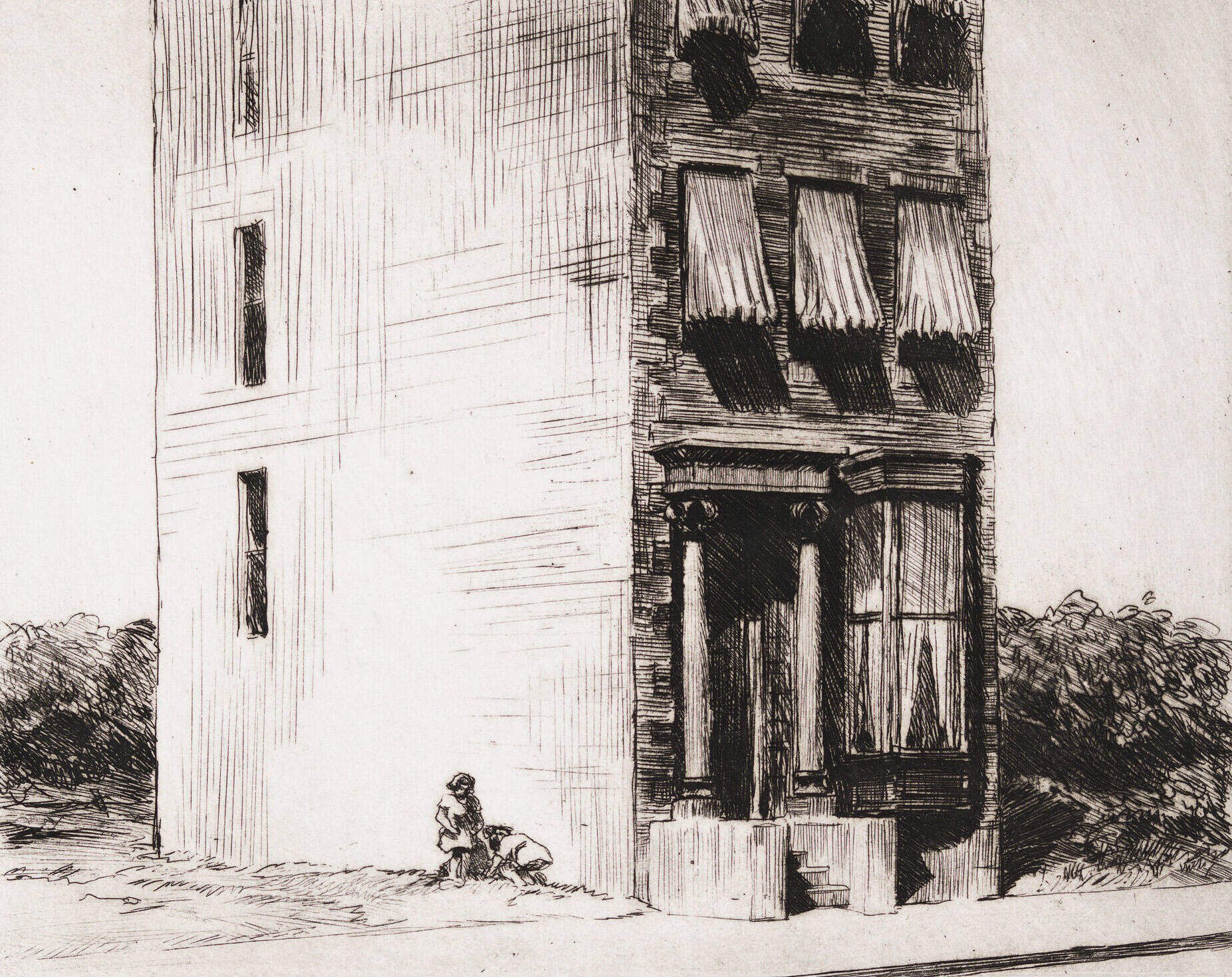For Hopper, New York was the city he knew best and liked most. Hopper captured not only the city’s environmental changes but also the “tense and enigmatic atmosphere” of this city.

Between 1928 and 1935, Hopper created five paintings of New York’s cityscape in horizontal panoramic format. Manhattan Bridge Loop is one of them. This painting portrays a bridge loop surrounded by urban and industrial buildings. The wide horizontal composition gives the sensation of “great lateral extent.” Hopper was interested in depicting architecture and buildings that can be personified to represent a city’s mood and cultural characteristics.

Hopper was an observer of everyday life. He spent hours strolling New York’s sidewalks. Hopper discovered an intriguing point of view, namely a window. A window is located between public and private spaces. Night Windows (1928) depicts a view of a room seen from the window. Inside the room, a woman in a red dress turns her back against the viewer. This painting does not only speak about “a night in an apartment in the city” but also “how it feels.” In this painting, light has an essential role in “establishing mood” and creating “pictorial drama,” especially when “contrasting it with areas of shadow and darkness.”
Hopper was also a printmaker in the early years of his career. He created illustrations and etchings that depict urban life in theaters, restaurants, and offices. Hopper’s illustration skill was shaped during his training in commercial art in his student years. Hopper also worked as an illustrator in the advertising and publishing industries in New York between the 1910s and 1920s.

New York was a home for Hopper during his entire mature career. He portrayed the “tremendous development” of this city—”skyscrapers,” “construction sites,” and “diverse population boomed,” as well as its paradoxes—”the awkward collisions of new and old, civic and residential, public and private.” (https://whitney.org).
Edward Hopper’s New York is an exhibition that features Hopper’s works inspired by the city of New York, “from his early impressions of New York in sketches, prints, and illustrations, to his late painting.”
Edward Hopper’s New York is on view through March 5, 2023, at the Whitney Museum of American Art, New York.
